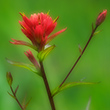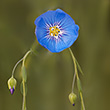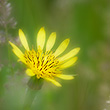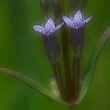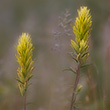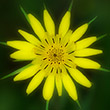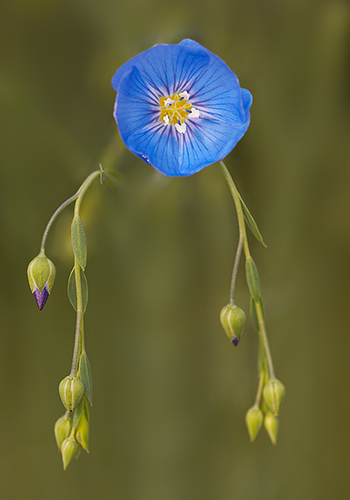
Availability: Undetermined - Enquiries?
In the Field
Dreadlocks on Western Blue Flax. Findlay Creek, BC, Canada. June 4, 2005.
Western Blue Flax grows naturally in the East Kootenays and it can tend to be fairly "aggressive" and spread quickly when it finds virgin habitat. Which suits me just fine - I find these delicate blue flowers (which last one day only) quite appealing!
My goal with this shot was to bring a couple of parts of this plant in sharp focus and throw the rest of it into a pleasing out-of-focus blur. To do so, I chose my longest macro lens (which has the narrowest depth of field of my macro lenses) and opened the aperture almost fully open.
Behind the Camera
Dreadlocks on Western Blue Flax. Findlay Creek, BC, Canada. June 4, 2005.
Digital Capture; Compressed RAW (NEF) format; ISO 100.
Nikon D2X with Nikon AF Micro 200 mm f/4 ED lens (300 mm equivalent with digital conversion factor) supported on Gitzo G2220 Explorer tripod with Really Right Stuff BH-55 ballhead. Nikon MC-20 cable release.
1/90s @ f5.6; -0.67 stop compensation from matrix-metered exposure setting. Shutter triggered with mirror-up.
At the Computer
Dreadlocks on Western Blue Flax. Findlay Creek, BC, Canada. June 4, 2005.
RAW Conversion to 16-bit TIFF, including first-pass sharpening, exposure compensation, and tone curve adjustment, using Phase One's C1 Pro.
All further digital correction on 16-bit TIFF file using Adobe's Photoshop CS2, including additional tone curve adjustment, selective saturation enhancement, and selective sharpening for web output.
Conservation
Dreadlocks on Western Blue Flax. Findlay Creek, BC, Canada. June 4, 2005.
Ten percent of the revenue generated by this image will be donated to Wildsight.
Species Status in Canada*: This species is not designated as at risk.
Western Blue Flax (Linum lewisii) is found in dry, open, or only partly shaded sites from Alaska in the north and south to New Mexico. Historically, Blue Flax has been put to many uses. Its stem contains long, tough fibres that have been used to make fishing lines, ropes, and even fishing nets. Additionally, the seeds of flax are used to produce oils or eaten.
This specimen of Blue Flax was photographed in the Columbia Valley of the East Kootenays. While this species is not currently considered at risk, like many other species local populations are very vulnerable to habitat loss. Many ecosystems within the Columbia Valley face development pressure, including pressure from logging operations. Wildsight is an effective conservation organization that protects biodiversity and promotes sustainable communities in Canada's Columbia and Rocky Mountains. Support for Wildsight, through donation or becoming a member, will help ensure that they remain effective in their efforts to conserve threatened or endangered species and ecosystems.
*as determined by COSEWIC: The Committee on the Status of Endangered Wildlife in Canada


















